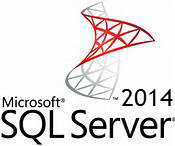Prologika Newsletter Winter 2013
 As I’m enjoying my vacation in tropical Cancun, Mexico, I hope you’ve been enjoying the holidays and planning your BI initiatives in 2014. Speaking of planning, you may have heard that Microsoft is working hard on next release of SQL Server, version 2014, which is expected in the first half of next year. Naturally, you may wonder what’s new in the forthcoming release in the BI arena. If so, keep on reading.
As I’m enjoying my vacation in tropical Cancun, Mexico, I hope you’ve been enjoying the holidays and planning your BI initiatives in 2014. Speaking of planning, you may have heard that Microsoft is working hard on next release of SQL Server, version 2014, which is expected in the first half of next year. Naturally, you may wonder what’s new in the forthcoming release in the BI arena. If so, keep on reading.
Just when you thought that you can finally catch your breath after the SQL Server 2012 and Office 2013 waves, SQL Server 2014 is looming on the horizon. Relax, version 2014 will be a database-focused release with no major changes to any of BI services: SSAS, SSRS, SSIS, PowerPivot, MDS and DQS. However, there are a couple of important enhancements that you might find more or less relevant to your BI projects. If they sound interesting, I encourage you to download and install the second Community Technology Preview (CTP2) of SQL Server 2014 so you can try and plan for the new features. CTP2 is a feature-complete build and new features are expected in the release bits.
Memory-optimized Tables
Previously code-named Hekaton, this new in-memory storage option allows you to host SQL Server tables in memory in order to improve I/O. Interestingly, Microsoft is the only vendor that ships the in-memory technology in the box without charging more for it. Moreover, this new enhancement doesn’t require new skills as it integrates seamlessly with SQL Server. It really is an enhancement. While predominantly targeting OLTP applications, I believe memory-optimized could be useful for narrow-case BI scenarios as well, such as for improving the performance of the ETL processes by using in-memory staging tables.
For example, ETL might require complex transformations with heavy I/O as a part of the nightly data warehouse load. With a few minor schema changes, you could configure the staging table in memory. Just by doing so you will gain significant performance improvements. How much improvementt? Results will vary depending on the ETL specifics of course. According to Microsoft, many applications see very significant performance gains, on average 10X, with results up to 30X. Much like optimizing hardware configurations, the results you get vary significantly depending on how much effort you put into the project. You can do a very simplistic, and low cost project, defining hot tables as memory optimized, and doing no other changes, or you can rewrite stored procedures to be natively compiled, investing more effort, and resulting in much better results. Here are additional resources to get you started with this great technology:
Server 2014 In-Memory Technology Blog Series Introduction
Getting Started with SQL Server 2014 In-Memory OLTP
In-Memory OLTP: Q & A Myths and Realities
Architectural Overview of SQL Server 2014’s In-Memory OLTP Technology
Clustered Columnstore Indexes
Introduced in SQL Server 2012, columnstore indexes were intended to speed up typical BI-type queries that aggregate many rows but request only a few columns. As we reported in this Microsoft case study “Records Management Firm Saves $1 Million, Gains Faster Data Access with Microsoft BI”, with columnstore indexes resource-intensive ETL queries achieved 10X performance gains. Specifically, their execution time dropped from about 20 minutes to less than 2 minutes.
On the downside, columnstore indexes were not updatable in SQL Server 2012, requiring ETL processes to drop and recreate the index after the load was completed. That wasn’t a huge issue for this specific project because creating the index on a fact table with 1.5 billion rows took about 20 minutes. Even better, in SQL Server 2014, Microsoft introduces clustered columnstore indexes and they will be updatable so you don’t have to drop the index. To gain the most from columnstore indexes, make sure that the queries that use them execute in a batch mode and not in row by row mode.
For more information about columnstore index internals and improvements in 2014, read the excellent “Enhancements to SQL Server Column Stores” whitepaper by Microsoft.
As you know, the BI landscape is fast-moving and it might be overwhelming. If you have Software Assurance benefits, don’t forget that as a Microsoft Gold Partner and premier BI firm, Prologika can use your SA vouchers and work with you to help you plan and implement your BI initiatives, including:
- Analyze your current environment and determine a vision for a BI solution
- Define a plan to launch a BI reporting and analysis solution
- Upgrading or migrating to SQL Server 2012
Regards,
Teo Lachev
President and Owner
Prologika, LLC | Making Sense of Data
Microsoft Partner | Gold Business Intelligence
EVENTS & RESOURCES
 Atlanta BI Group: Bus Matrix – the foundation of your Dimensional Data Model by Bill Anton
Atlanta BI Group: Bus Matrix – the foundation of your Dimensional Data Model by Bill Anton
 Atlanta BI Group: Data Warehousing by Lance England
Atlanta BI Group: Data Warehousing by Lance England
 SQL Saturday Atlanta: May 3rd, 2014
SQL Saturday Atlanta: May 3rd, 2014




